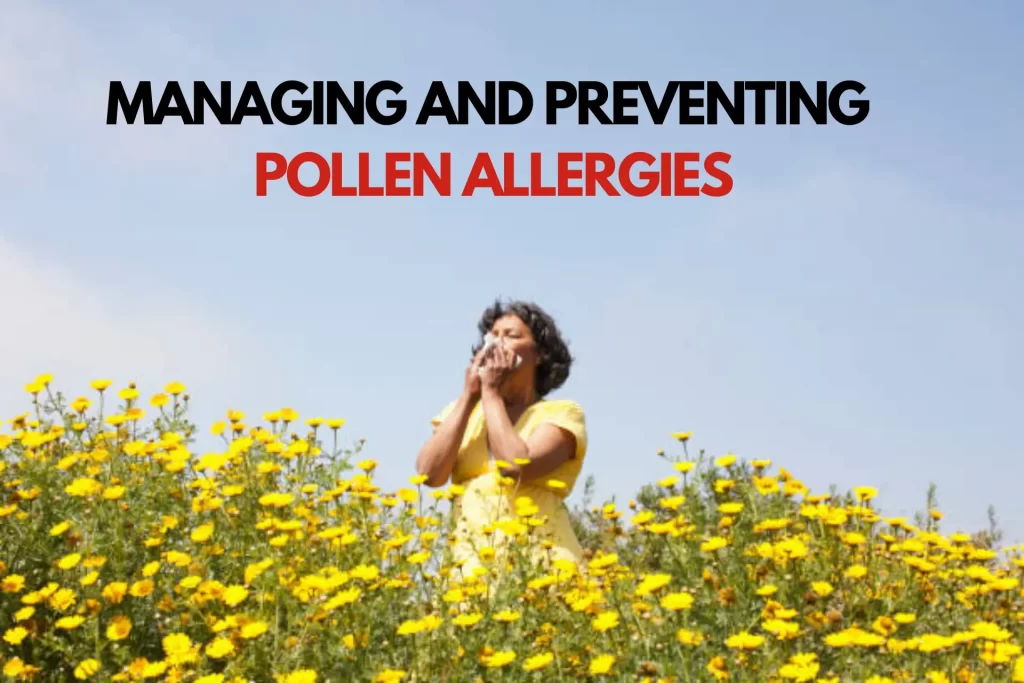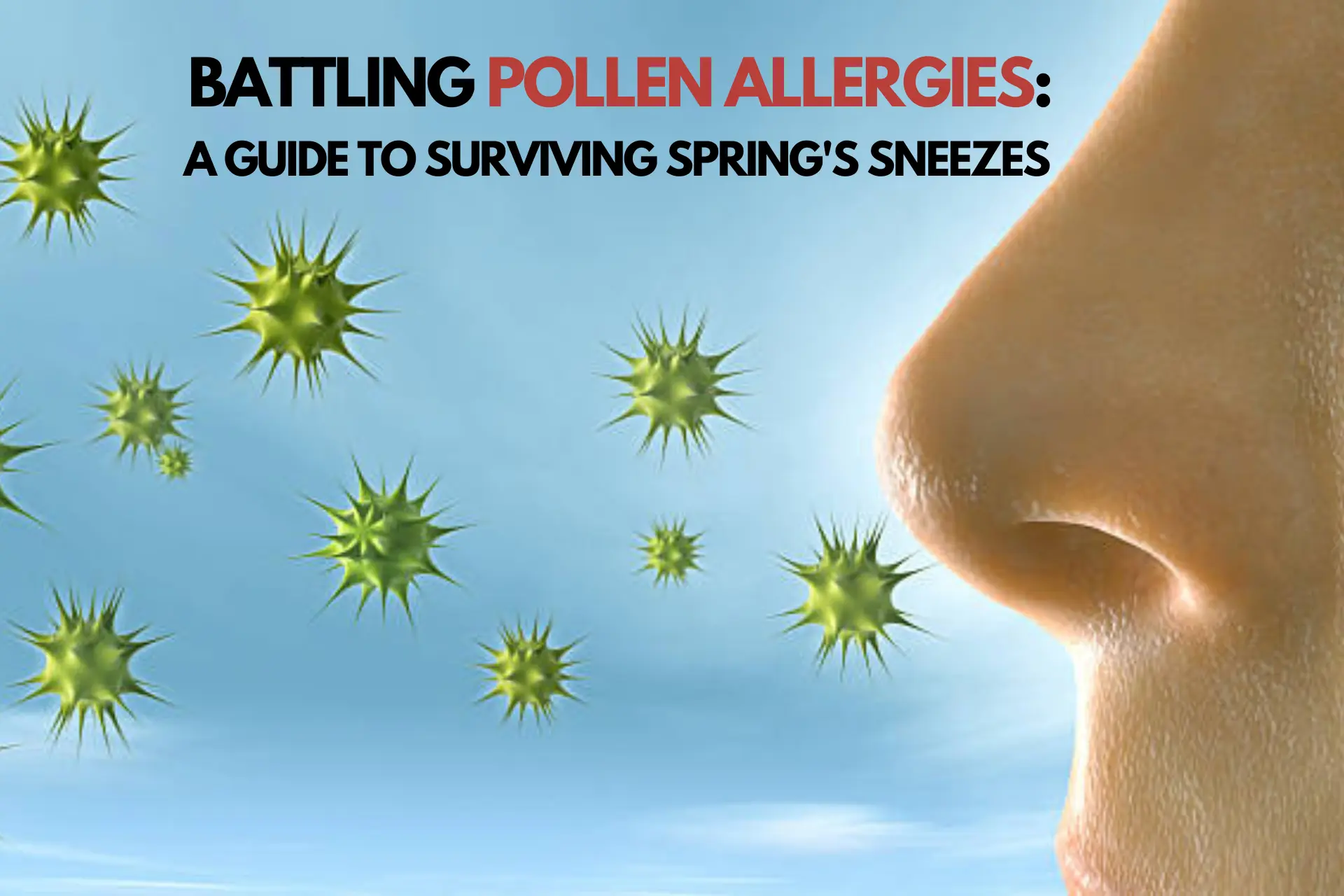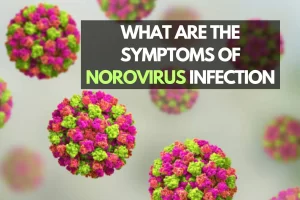Spring brings with it a riot of colors, the promise of warmer days, and for many, the dreaded onset of pollen allergies. As flowers bloom and trees burst into leaf, the air becomes laden with pollen particles, triggering allergic reactions in susceptible individuals. If you find yourself reaching for the tissues at the first signs of spring, you’re not alone. Let’s delve into what pollen allergies entail, how they affect us, and most importantly, how to manage them effectively.
Table of Contents
Understanding Pollen and Pollen Allergies

Pollen, a fine yellowish powder, travels from plant to plant through various means such as wind, birds, insects, or other animals. While essential for fertilizing plants, this dispersion can spell misery for those plagued by seasonal allergies.
Pollen allergies, also known as hay fever or allergic rhinitis, occur when the body’s immune system overreacts to pollen particles in the air. Common symptoms include sneezing, itching, nasal congestion, watery eyes, and a scratchy throat. These symptoms can range from mildly annoying to severely debilitating, significantly impacting one’s quality of life.
What month is pollen the highest?
The peak of pollen varies depending on the region and the specific types of plants present. Generally, pollen levels tend to be highest during spring and early summer months, typically from March to June. However, this can vary based on factors such as geographical location, climate, and the types of plants prevalent in the area.
Pollen types vary depending on the time of year, with tree pollen typically prevalent in early spring, grass pollen in late spring and early summer, and weed pollen in late summer and early autumn. Each pollen type can trigger allergic reactions in sensitive individuals, prolonging the allergy season throughout the year.
Symptoms of Pollen Allergies
When exposed to air dense with pollen, individuals with pollen allergies may encounter a range of symptoms, including:
– Sneezing
– Nasal congestion
– Runny nose
– Watery eyes
– Itchy throat and eyes
– Wheezing Moreover, pollen can exacerbate asthma symptoms, leading to heightened coughing and wheezing.
Managing and Preventing Pollen Allergies: Practical Tips
1. Monitor Pollen Counts: Stay informed about pollen levels in your area by checking local pollen forecasts. On high pollen days, limit outdoor activities, especially during peak pollen times, typically in the early morning and evening.
2. Create an Allergy-Safe Home: Keep windows closed during high pollen seasons and use air conditioning with HEPA filters to purify indoor air. Regularly vacuum carpets and upholstery to remove pollen particles that may have been tracked indoors.
3. Personal Protection: When venturing outdoors, wear sunglasses to protect your eyes from pollen and consider using a pollen mask or scarf to cover your nose and mouth. Shower and change clothes after spending time outdoors to remove any pollen clinging to your skin and clothing.
4. Allergy-Friendly Garden: If you enjoy gardening, opt for low-allergen plants such as roses, begonias, or daffodils, and avoid high-pollen plants like grasses and certain trees. Consider hiring someone to mow the lawn during peak pollen seasons to minimize your exposure.
5. Medication Management: Over-the-counter antihistamines, nasal sprays, and decongestants can provide relief from pollen allergy symptoms. However, it’s essential to consult with a healthcare professional before starting any new medication, especially if you have underlying health conditions or are taking other medications.
6. Natural Remedies: Some individuals find relief from pollen allergies through natural remedies such as saline nasal rinses, local honey consumption, or herbal supplements like butterbur or quercetin. While these remedies may offer relief for some, results can vary, and it’s advisable to discuss their use with a healthcare provider.
Coping with the Emotional Toll
Living with pollen allergies isn’t just about managing physical symptoms; it also involves coping with the emotional toll it can take. Constant sneezing, itching, and congestion can leave sufferers feeling exhausted, frustrated, and isolated.
It’s essential to seek support from friends, family, or online communities who understand what you’re going through. Sharing experiences, tips, and coping strategies can provide much-needed emotional support and reassurance that you’re not alone in your struggles.
Additionally, practicing stress-reduction techniques such as mindfulness, yoga, or deep breathing exercises can help alleviate anxiety and promote a sense of calm amidst the allergy storm.
Looking to the Future: Advances in Allergy Treatment
While pollen allergies can be challenging to manage, ongoing research offers hope for more effective treatments in the future. Immunotherapy, commonly known as allergy shots, involves gradually exposing individuals to increasing doses of allergens to desensitize their immune system over time. This treatment can provide long-term relief from allergy symptoms and reduce the need for medication.
Furthermore, advancements in biotechnology are paving the way for innovative allergy treatments, including sublingual immunotherapy tablets that dissolve under the tongue and biologic therapies that target specific immune pathways involved in allergic reactions.
As our understanding of pollen allergies deepens and technology continues to advance, the future looks promising for allergy sufferers seeking long-term relief and improved quality of life.
Conclusion
In conclusion, pollen allergies may cast a shadow over the joys of spring, but with the right strategies and support, they need not dampen your spirits entirely. By staying informed, taking proactive measures to reduce exposure, and seeking appropriate treatment, you can navigate allergy season with greater ease and reclaim your enjoyment of the season’s delights. Remember, you’re not alone in this journey, and relief is within reach.
Also Watch: Best Supplements to Reduce Blood Sugar




